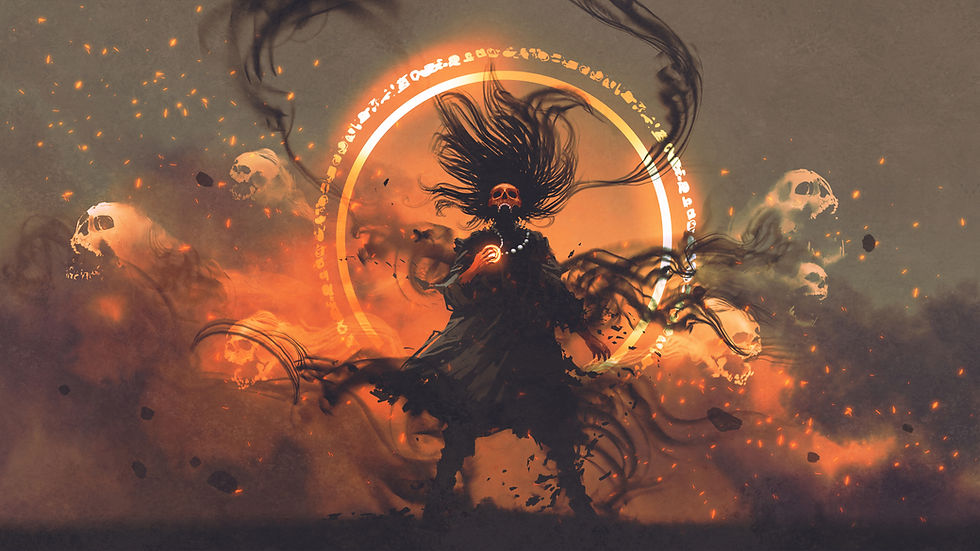Art and Literature : How Art Improves Writing
- Prisha

- May 22, 2024
- 3 min read
Updated: May 23, 2024
by Prisha Mehta
The object of art is not to reproduce reality, but to create a reality of the same intensity. - Alberto Giacometti
Oftentimes literature does the same to us, we get lost in the alternate reality of the novel, letting imagination and reality collide. Literature and art have always been hand in hand, each a personification of the other, authors have often drawn inspiration from artworks.
Examples of artworks being incorporated with literature are novels such as The Da Vinci Code, Black Water Lilies, and The Goldfinch. Let us take a closer look inside Dan Brown's The Da Vinci Code which uses Leonardo da Vinci’s masterpieces such as the enigmatic smile of the Mona Lisa which acts as a clue for the protagonist in unravelling the mystery as well as using the cryptic imagery in The Last Supper. These paintings acted as the backstory for the novel, using these artworks to uncover the ancient secrets and challenge the conventional interpretations of history and religion.
Similarly, Micheal Bussi’s book Black Water Lilies, portrays Claude Monet’s famous painting "Water Lilies”. He takes us deeper into the psyche of the painter while setting the novel in his hometown “Giverny”. The author uses the painting as a metaphor, like the flowers floating on the surface of the pond. This metaphor can be interpreted in many ways such as how we only see people at their surface level just like the flowers never bothering to see their inner being or their roots, so to speak. Another perspective could be how like flowers we are ephemeral, a fleeting life in this system, one day we bloom the next we wither. The paintings serve as a bridge between the past and present, as secrets unravel, everything leads back to Monet’s masterpieces.
The same way, one can use artworks to depict various types of symbolism in their novels. Here’s how you can do the same:
Choosing the Right Artwork
Selecting the correct artwork is crucial to effectively convey symbolism in writing. Consider the themes, mood, and tone of your story, and choose artwork that aligns with these elements. Look for pieces that evoke emotions or concepts relevant to your story, more specifically its plot. Whether it's a painting, sculpture, photograph, or any other form of visual art, the chosen artwork should resonate and connect with the story.
2. Interpreting Symbolism
Once you've chosen your artwork, dive into its symbolic significance. Explore its cultural, historical, and artistic context to understand its hidden nuances. Consider how the artwork has been interpreted by scholars, critics, and artists throughout history. By understanding the symbolism behind the artwork, you can effectively integrate it into your writing and imbibe your story with multiple interpretations. E.g. The book Girl with a Pearl Earring by Tracy Chevalier explains the historical past of painter Johannes Vermeer’s painting of the same name by imagining the life of Griet, a servant in Vermeer’s household and capturing the social and cultural aspects of the Dutch Golden Age. This shows us perspectives we might have never thought of before.
3. Using Artwork as Plot Devices
Artwork can serve as more than just decorative elements; it can also drive the plot forward and help develop characters. Using the artwork as a symbol for change, revelation, or conflict within the story helps us to understand the characters and their relationships with the artwork and how they evolve over time, reflecting their growth, struggles, and inner turmoil. By using such artworks in the key plot points, one can create a story that truly resonates with the readers.
To enhance the writing to properly adapt the artwork into the plot of the story, one can use writing techniques such as,
Descriptive Imagery
This would be one of the most important and integral ways to adapt the artwork into the story. Through using sensory details to engage the reader's imagination, it can evoke a powerful visual experience. This essentially creates a vivid and immersive description of the artwork within the story.
2. Character Interactions with Art
A painting can be used to show different perspectives to different people. Each character can have a different emotional attachment to the artwork. This shows how the characters interact with the artwork, revealing their personalities, emotions, and beliefs through their responses to the artwork.
Thus, using artworks as symbols in writing is a way to make stories more interesting as well as meaningful. Writers can pick such artworks after understanding its history and hidden emotions to correctly utilise it in their piece. This helps the readers form an attachment to the artwork through literature. Utilising various writing techniques will enhance the reader’s senses to read a story they surely will not forget. Using writing techniques such as these will not only make the novel much more enthralling, but also allows the author to experiment with various writing techniques.
Follow the author Prisha on Instagram @prishaaa_m





Comments